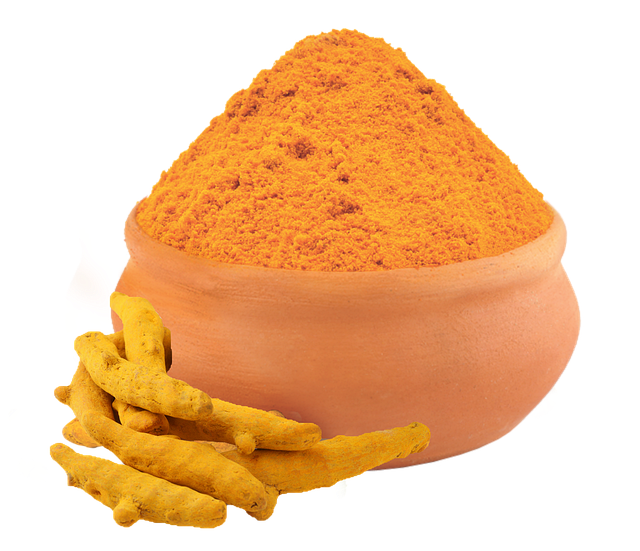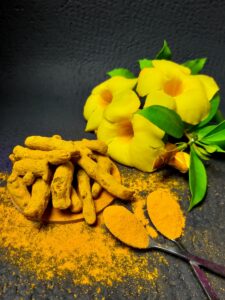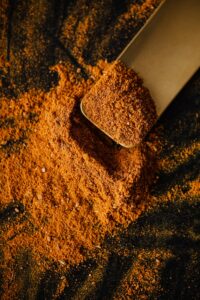Culinary heritage and turmeric’s role in global cuisines are intertwined in a rich tapestry of flavors, traditions, and health benefits. Turmeric, commonly known as “the golden spice,” has been an integral part of various culinary practices across the world for centuries. Its vibrant color, earthy aroma, and distinctive flavor make it a prized ingredient in a plethora of dishes. Beyond its culinary allure, turmeric also holds a significant place in traditional medicine, with its curative properties celebrated in ancient Ayurvedic and Chinese practices. This article delves into the diverse uses of turmeric powder, its historical significance, health benefits, and its contributions to the global culinary landscape.

Turmeric’s Historical Significance in Culinary Heritage
Turmeric’s connection to culinary heritage dates back thousands of years. Originating from the Curcuma longa L. plant’s rhizome, this spice found its way into cuisines spanning continents. From Indian cooking to Thai delicacies, from Middle Eastern stews to Indonesian curries, turmeric has infused its vivid color and distinctive flavor into a myriad of dishes. The spice even played a role in food preservation, as its antimicrobial properties helped protect ancient civilizations from tainted and poisoned food.
Ayurvedic Medicine and Traditional Chinese Medicine: Turmeric’s Medicinal Properties
Beyond its culinary applications, turmeric has been an essential component of traditional medicine systems like Ayurveda and Traditional Chinese Medicine. In Ayurvedic medicine, turmeric is used to create healing pastes and extracts, revered for their potential to alleviate various ailments. Turmeric paste, when applied topically, is believed to aid wound healing, thanks to its anti-inflammatory and antimicrobial properties. Traditional Chinese Medicine also acknowledges turmeric’s potential to balance the body’s energies and promote overall well-being.
Health Benefits of Turmeric: Curcumin and Beyond
At the heart of turmeric’s health benefits lies curcumin, a bioactive compound with potent antioxidant and anti-inflammatory properties. Curcumin-rich extracts have shown promise in disease prevention and management, targeting conditions ranging from inflammatory bowel disease to rheumatoid arthritis. Studies suggest that curcumin’s antioxidant activity combats oxidative stress and its associated ailments, including cardiovascular diseases and cancer cells.

Enhancing Bioavailability: Unlocking Turmeric’s Potential
While curcumin offers remarkable health benefits, its absorption poses a challenge. Curcumin’s bioavailability is limited due to its poor solubility and rapid metabolism. To address this, various approaches have been explored, such as combining turmeric with black pepper, which contains piperine that enhances curcumin absorption. Researchers are also exploring curcumin formulations and nanoemulsions to improve its bioavailability.
Turmeric in Modern Cuisine and Food Processing
As culinary heritage evolves, so does the use of turmeric in modern cooking. From commercial curry powders to processed snacks, turmeric has found its way into a multitude of food products, imparting both flavor and a touch of health appeal. Chefs and home cooks alike are incorporating turmeric to lend vibrant color and a distinct taste to their creations. The ground turmeric and turmeric extracts are now common ingredients in kitchens worldwide.

Exploring Turmeric’s Future: From Spices to Supplements
Turmeric’s journey from ancient spice racks to modern kitchens has paved the way for its integration into dietary supplements and alternative remedies. Curcumin supplements, available in various forms, cater to those seeking to harness its potential health benefits. While research continues to uncover curcumin’s therapeutic properties, it’s important to note that the effectiveness of curcumin intake may depend on factors such as dosage, formulation, and individual health conditions.
Challenges and Future Directions
Despite its manifold benefits, turmeric and curcumin research face challenges such as curcumin stability and consistent extraction methods. Scientists are exploring innovative techniques for curcumin extraction and stabilization, ensuring its potency and reliability in both culinary and medicinal contexts.
Culinary Heritage and Turmeric’s Role in Global Cuisines – Final Thoughts
Culinary heritage and turmeric’s role in global cuisines form a captivating narrative that spans cultures, cuisines, and centuries. Turmeric, with its vibrant color and unique flavor, has not only enriched dishes but also played a pivotal role in traditional medicine systems. From Ayurvedic practices to contemporary culinary innovations, turmeric’s journey is one of evolution, adaptation, and shared appreciation. As research continues to uncover its potential health benefits, turmeric’s golden hue will continue to grace tables and spice racks, bridging the gap between tradition and modernity. Whether ground into powder, incorporated into curries, or transformed into extracts, turmeric’s presence in the culinary world is nothing short of golden.

